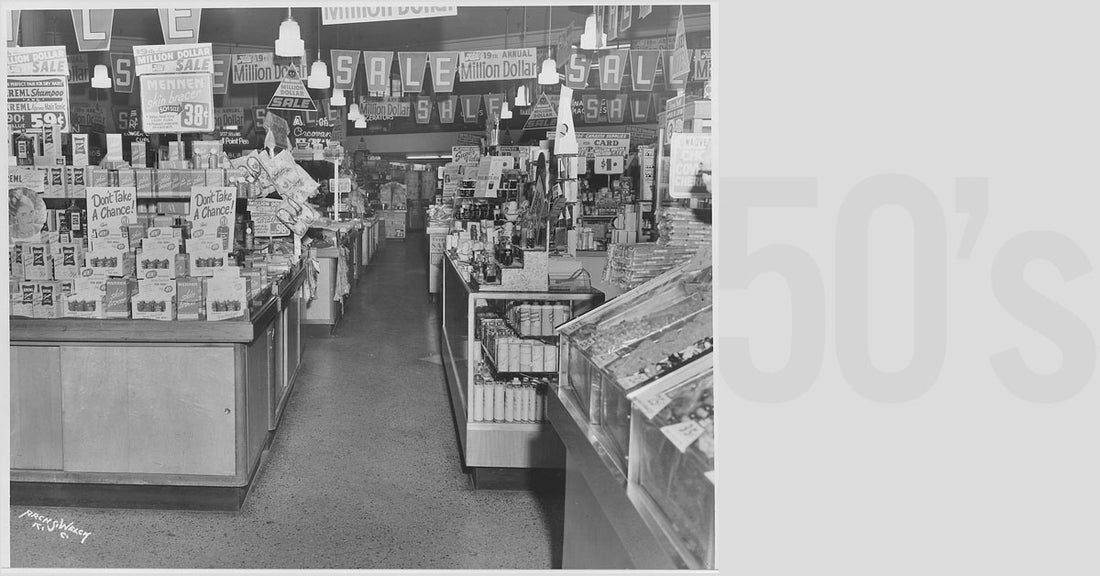
Supermarkets in the 1950s: Changes to How Americans Bought Groceries
Share
Supermarkets as we more or less know them today were a mid-century creation. They got their start in the 1930s (though some smaller self-service grocery stores existed prior to that), but the Great Depression and World War II kept them from really taking off. It was in the 1950s that they came into their own as a primary way for Americans to purchase their groceries. Let's take a quick look at some of the changes that came about thanks to supermarkets in the 1950s.
Of course, much of the supermarket's success as a shopping entity in the '50s was due to factors like mass migration to suburbs, the proliferation of the automobile, more disposable income during the post-WWII economic boom, and more mouths to feed due to the post-WWII baby boom.
In the US in 1950, supermarket chains accounted for 35 percent of food retailing dollars spent for at-home consumption. The decade saw a tremendous boost in their market share, which doubled to 70 percent by 1960. The number of supermarkets more than doubled in the same time, too, going from 14,000 in 1950 to 33,000 in 1960.
The changes outlined below are all so familiar to us today, we think nothing of them. However, these characteristics of supermarkets in the 1950s were fairly unfamiliar at the time.
Changes Brought on by Supermarkets in the 1950s
- Consumers began doing all or most of their grocery shopping at one location, rather than visiting multiple specialty stores.
- Supermarkets required relatively large lots, so were often on the outskirts of cities.
- These large grocery stores features unusually large parking lots for the times to accommodate high numbers of customers, all or most of whom would arrive in a vehicle.
- Customers started retrieving their own items from shelves with large selections, rather than an employee packing up requested items.
- There was a much larger variety of the same types of products than grocery shoppers were accustomed to; grocery store chains carried up to 10,000 individual, nationally branded items.
- Prices dropped significantly, as sales volume and average spend became the primary profit drivers over markup on individual products.
- Locally grown produce began its decline at supermarkets in the 1950s, when stores started prioritizing lower prices from national suppliers. Large grocery chains were actually fairly devastating to local farmers. They also led to the demise of many a mom-and-pop specialized food store.
- Plastic film and wrapping machines allowed for the introduction of prepared, pre-packaged fruits and vegetables at these stores, which had the funds, space, and manpower to use them.
- Supermarkets made it easier for people to get all the ingredients for some of those horrifying foods of the mid-century years!
